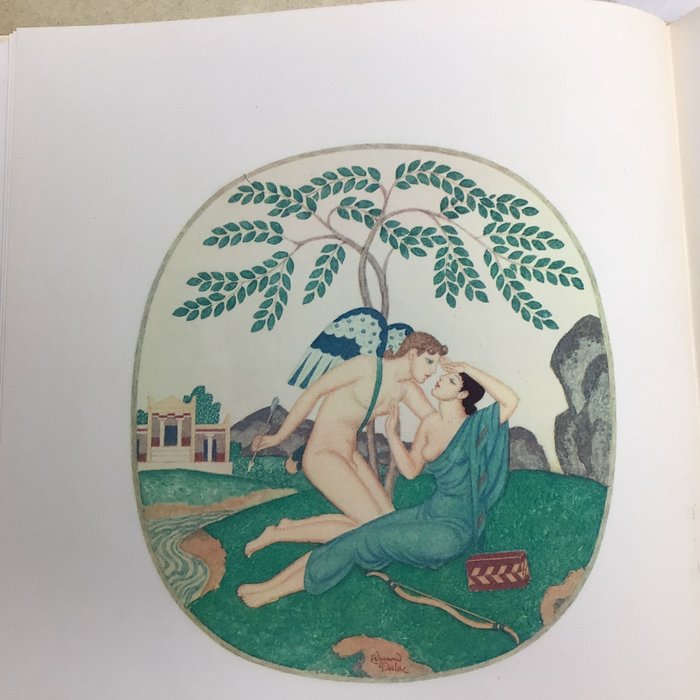
JK Rowling aka Robert Galbraith - The Cuckoo’s Calling: Special Anniversary Edition Limited to 1.000 copies JK Rowling aka Robert - 2023
No. 80505517

No. 80505517

"The Marriage of Cupid and Psyche" retold by Walter Pater from the Golden Ass of Lucius Apuleius and illustrated by Edmund Dulac - Limited Editions CLub, New York - 1951 limited edition, this being no 432, signed by illustrator Edmund Dulac - 20cmx15cm - condition: about fine copy in original vellum binding, minor rubbing, in original slipcase, with all Dulac illustrations present
Cupid and Psyche is a story originally from Metamorphoses (also called The Golden Ass), written in the 2nd century AD by Lucius Apuleius Madaurensis (or Platonicus).[2] The tale concerns the overcoming of obstacles to the love between Psyche (/ˈsaɪkiː/; Ancient Greek: Ψυχή, lit. 'Soul' or 'Breath of Life', Greek pronunciation: [psyːkʰɛ̌ː]) and Cupid (Latin: Cupido, lit. 'Desire', Latin pronunciation: [kʊˈpiːd̪oː]) or Amor (lit. 'Love', Greek Eros, Ἔρως), and their ultimate union in a sacred marriage. Although the only extended narrative from antiquity is that of Apuleius from 2nd century AD, Eros and Psyche appear in Greek art as early as the 4th century BC. The story's Neoplatonic elements and allusions to mystery religions accommodate multiple interpretations,[3] and it has been analyzed as an allegory and in light of folktale, Märchen or fairy tale, and myth.[4]
The story of Cupid and Psyche was known to Boccaccio in c. 1370, but the editio princeps dates to 1469. Ever since, the reception of Cupid and Psyche in the classical tradition has been extensive. The story has been retold in poetry, drama, and opera, and depicted widely in painting, sculpture, and even wallpaper.[5] Though Psyche is usually referred to in Roman mythology by her Greek name, her Roman name through direct translation is Anima.
How to buy on Catawiki
1. Discover something special
2. Place the top bid
3. Make a secure payment